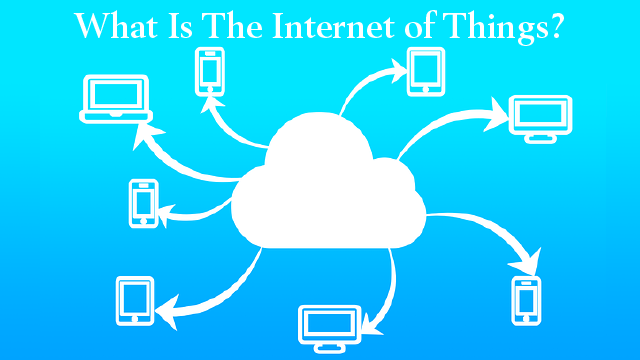
If you search “New Technology 2021,” you’ll be bombarded with lists. The following eight concepts are on the majority of them: robotics, drones, 3D printing, blockchain, artificial intelligence, augmented reality, virtual reality, and the Internet of Things.
Most of these concepts are gradually being woven into today’s public consciousness.
You watch movies or the news utilizing drone footage.
You hear about the blockchain and see articles about cryptocurrencies almost daily.
You remember The Jetsons and are still waiting for that life-sized housecleaning robot.
But the Internet of Things? That feels like a more nebulous concept.
What is the Internet of Things (IoT)?
Put simply, IoT is about connection. Seamless integration between the user and their devices. To quote directly from a journal titled New Tech, New Deal: Technology Impacts Review – “IoT is the connection of objects such as computing machines, embedded devices, equipment appliances, and sensors to the Internet.[1]”
If you have a thermostat you can control with your phone or lamps that are plugged into smart outlets so you can flip them on and off from a beach in Tahiti – that’s the Internet of Things at play.
The end goal is that all the connected devices can collect data, transfer it to a central network and then act upon it all without any human interaction. While that sounds like a James Bond villain-level invasion of personal privacy when applied to household thermostats, the biggest impact of interconnectivity will be felt in the business world.
The Impact on Business
IoT can provide instant and real-time feedback on a company’s operations. For example, in the manufacturing industry, IoT can provide data on the health of equipment. Which parts of the machine are in good working order? Which are not? Not only that, but when will they not be? It can provide early warnings, fixing problems before they become problems.
Or the supply chain, which can be a tangled web. Projecting product demand can be difficult with mistakes being costly. IoT has the ability to track individual mechanisms, transmitting the data onto a shared blockchain. Instant accessibility allows companies to know when production needs to be ramped up or scaled back. The Internet of Things allows information to be shared quickly and in a visible, traceable manner so that intelligent decisions can be made faster[2].
Worldwide spending on the Internet of Things is projected to be around $1.1 trillion by 2023, according to a study published Jan 14, 2021[3]. As the world becomes more and more virtual, it only makes sense for businesses to adapt in kind.
What About Smart Cities?
In 2015, Indian Prime Minister Narendra Modi announced a plan to establish 100 smart cities throughout India. His plan revolves around three areas: 1) electronic dissemination of information between the government and its citizens, enabling instant feedback, 2) automated energy controls and green building development, and 3) intelligent traffic management systems.
In essence, it’s the Internet of Things not just in the workplace, not just in your smart phone, but also the everyday world[4].
As of 2021, the process for creating these smart cities has hit some snags. Selected cities were meant to finalize their projects within five years, yet only 63% of proposed smart city projects have been completed (1,119 of 1,794)[5]. A combination of bureaucracy, cost, and Covid-19-related disruptions have caused delays. Things could be looking up, though, as the costs to build these connected networks are declining, while at the same time new ways of harvesting huge swaths of data are being created.
Corporations, governments, and, yes, individuals have sought out technological innovations made possible by the Internet of Things. As that connected network continues to grow, so does the Internet of Things.
Joe Gallina
 Joe has a degree in Finance from the University of Illinois at Chicago. Afterwards, he worked for Morgan Stanley and Bank of America/Merrill Lynch, obtaining both Series 7 and 66 licenses. At Merrill, he was on the self-directed side of the business, exposing himself to every aspect of the financial services industry.
Joe has a degree in Finance from the University of Illinois at Chicago. Afterwards, he worked for Morgan Stanley and Bank of America/Merrill Lynch, obtaining both Series 7 and 66 licenses. At Merrill, he was on the self-directed side of the business, exposing himself to every aspect of the financial services industry.
Copyright © 2021 Protinus. All rights reserved.
[1] Ramdoo, I. (2019). KEY EMERGING TECHNOLOGY TRENDS. In NEW TECH, NEW DEAL: Technology Impacts Review (pp. 7–23). International Institute for Sustainable Development (IISD). http://www.jstor.org/stable/resrep21976.5
[2] https://nttdata-solutions.com/bnl/innovations/internet-of-things/
[3] https://www.statista.com/statistics/668996/worldwide-expenditures-for-the-internet-of-things/
[4] BUTLER, R. J., & LACHOW, I. (2016). THE INTERNET OF THINGS AND SMART CITIES. In SMART CITY PARTNERSHIPS: Smart Cities and the Internet of Things: Benefits, Risks, and Options(pp. 4–6). New America. http://www.jstor.org/stable/resrep10510.5
[5] https://www.newindianexpress.com/thesundaystandard/2021/sep/12/hundreds-of-projects-under-smart-city-mission-still-incomplete-2357389.html
